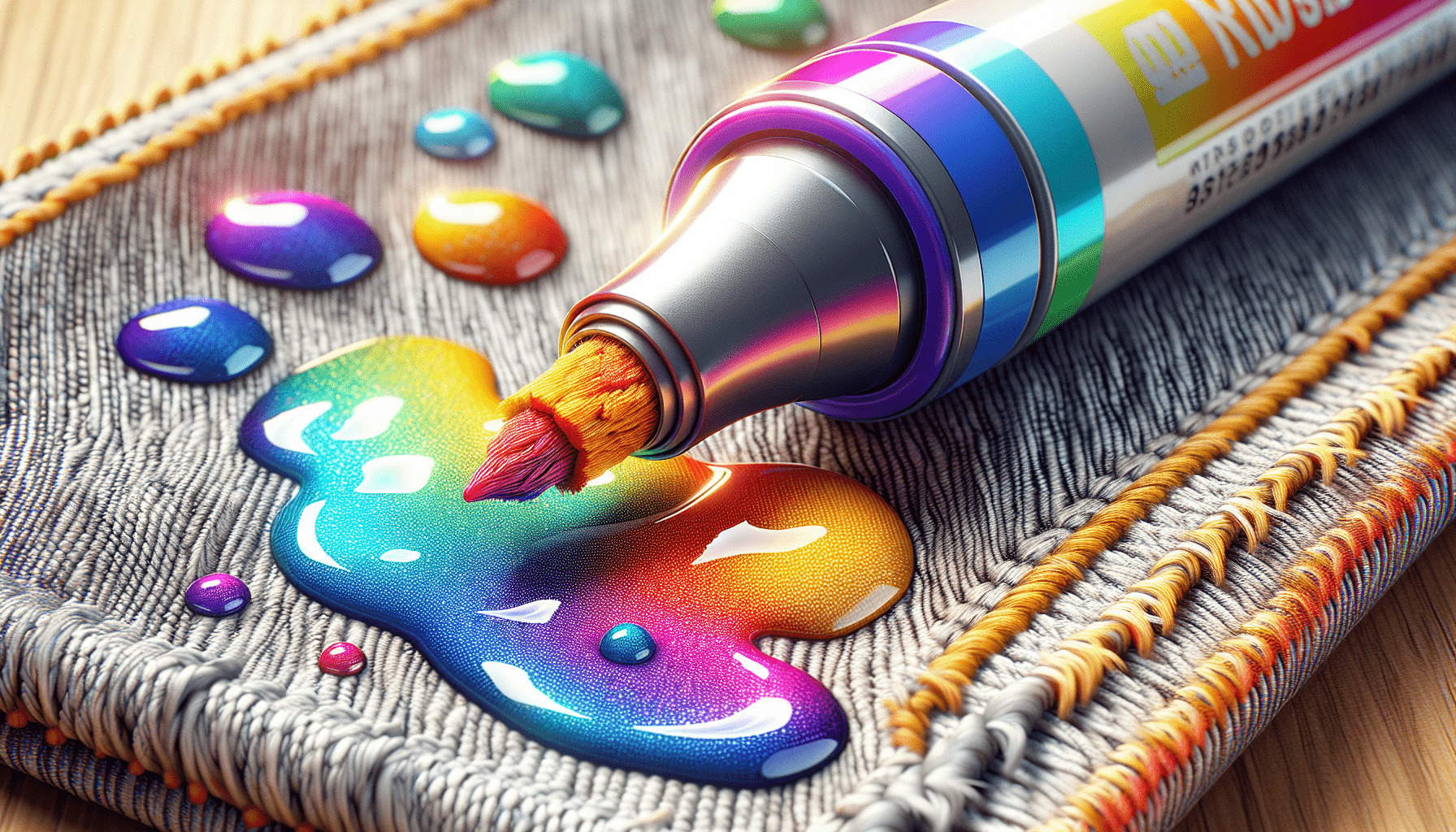Have you ever faced the challenge of removing paint marker from plastic surfaces? Whether it’s an unintended art project, a child’s creative endeavor, or an accidental spill from a DIY task, dealing with paint marker on plastic can seem daunting. Fortunately, there are tried-and-true methods that can help you restore the clean, unmarked state of your plastic items.
Understanding Paint Markers
Before you embark on the task of removal, it’s beneficial to have a clear understanding of what paint markers are and why they pose a challenge on plastic surfaces. Paint markers contain a highly pigmented, quick-drying liquid that is designed to adhere to and stand out on various surfaces. They are favored for their bold colors, opacity, and ease of use. Unlike regular ink markers, the pigments in paint markers are designed to stay put, making them durable and resistant to fading.
However, this durability and strong adherence make it progressively challenging to remove paint markers from surfaces like plastic, where the paint might integrate with the plastic’s surface layer.
Factors Influencing the Removal Process
Type of Plastic
Not all plastic is created equal. Some plastics are more porous than others, which can affect how deeply paint marker pigments are absorbed. Moreover, the chemical composition of different plastics can react differently to various solvents and cleaning agents.
Age and Type of Paint Marker
The age of the paint marker on the plastic can also influence the effectiveness of your removal methods. Fresh marks can often be removed more easily than older, dried, and set marks. Additionally, oil-based markers pose more difficulty for removal compared to water-based options.
Surface Condition
The condition of the plastic surface—whether it’s smooth, textured, or scratched—will also influence the removal process. Textured or scratched plastic can trap paint particles, making them harder to remove.

Materials and Tools for Removal
Having the right tools and materials can significantly enhance your efforts to remove paint marker from plastic. Here are some essential items you might need:
| Material/Tool | Purpose |
|---|---|
| Isopropyl Alcohol | Dissolves and lifts paint pigments |
| Acetone/Nail Polish Remover | Effective solvent for tougher, oil-based markers |
| Dish Soap and Water | Basic cleaning agent to remove initial layers of paint |
| Cotton Balls/Swabs | For precise application of cleaning agents |
| Soft Cloths | For wiping and polishing the surface |
| Plastic Scraper | To gently scrape off stubborn paint without scratching |
| Baking Soda and Water | Creates a gentle abrasive paste for scrubbing |
| Toothbrush | To scrub without damaging the plastic |
| Automotive Polish | To polish and restore the plastic surface post-cleaning |
Step-by-Step Methods for Removal
Method 1: Using Isopropyl Alcohol
Isopropyl alcohol is a versatile cleaning agent effective on many types of paint markers, especially water-based ones.
- Preparation: Ensure the area is well-ventilated. Use gloves to protect your hands.
- Application: Dampen a cotton ball or pad with isopropyl alcohol.
- Dabbing: Gently dab the cotton ball on the paint mark. Avoid excessive rubbing which could damage the plastic.
- Wiping: Use a soft cloth to wipe off the dissolved paint.
- Final Cleaning: Rinse the area with water and mild dish soap to remove any residue.
- Polishing: Use an automotive polish to restore the plastic’s shine if needed.
Method 2: Using Acetone or Nail Polish Remover
Acetone is a stronger solvent and can be particularly effective on stubborn or oil-based paint markers. However, use it with caution as it can sometimes damage or discolor plastic.
- Preparation: Work in a well-ventilated area and wear gloves.
- Testing: Perform a spot test in an inconspicuous area to ensure it doesn’t damage the plastic.
- Application: Dampen a cotton ball with acetone.
- Dabbing: Gently dab the marked area.
- Scrubbing: Use a soft cloth or toothbrush to scrub the area gently.
- Final Cleaning: Wash the area with water and dish soap to remove residual solvent.
- Polishing: Apply automotive polish if necessary to restore the surface.
Method 3: Using a Baking Soda Paste
Baking soda acts as a mild abrasive, making it suitable for scrubbing without scratching the plastic.
- Paste Preparation: Mix baking soda with a small amount of water to form a thick paste.
- Application: Apply the paste to the paint-marked area.
- Scrubbing: Use a soft cloth or a toothbrush to scrub the area gently.
- Rinsing: Rinse with water and use dish soap to remove any remaining paste.
- Polish: If needed, apply an automotive polish to renew the surface.
Method 4: Dish Soap and Water
This method is suitable for fresh marks that haven’t set in deeply.
- Preparation: Mix dish soap with warm water.
- Dabbing: Dampen a cloth or sponge with the soapy water.
- Wiping: Wipe the marked area repeatedly until the paint begins to lift.
- Rinsing: Rinse with clean water.
- Repeat: Repeat the process if necessary until the paint is removed.

Safety Precautions
Using solvents and other cleaning agents requires attention to safety to avoid potential risks.
- Ventilation: Always work in a well-ventilated area to avoid inhaling fumes from substances like acetone and isopropyl alcohol.
- Protective Gear: Wear gloves to protect your skin from harsh chemicals.
- Spot Testing: Always perform a spot test to ensure that the cleaning agent does not damage the plastic.
Maintenance and Prevention Tips
While removing paint markers is feasible, preventing stains and maintaining your plastic surfaces can save time and effort.
- Protective Coatings: Apply a protective coating or sealant designed for plastic surfaces. This can prevent paint markers from adhering strongly to the surface.
- Regular Cleaning: Keep the plastic surfaces clean and free from contaminants that could cause or attract stains.
- Immediate Action: Remove paint marker stains as soon as they occur. The longer the paint stays on the plastic, the harder it becomes to remove.
- Effective Storage: Store paint markers away from areas where they could accidentally come into contact with plastic surfaces.
Professional Help
If DIY methods fail to remove the paint marker, it might be time to seek professional help. Specialized cleaning services often utilize advanced techniques and equipment that can effectively remove stubborn stains without damaging the plastic surface.
Eco-Friendly Alternatives
For those inclined towards eco-friendly methods, there are green alternatives to traditional chemical solvents.
- Eco-Friendly Solvents: Use biodegradable cleaning solvents designed for safe use on plastics.
- Vinegar and Lemon Juice: A mixture of vinegar and lemon juice can sometimes be effective, especially when combined with baking soda.
- Natural Abrasives: Coconut oil mixed with baking soda can create a gentle abrasive cleaner that is both effective and environmentally safe.
Conclusion
Dealing with paint marker stains on plastic can be challenging, but with the right approach, tools, and materials, you can successfully remove these marks. Understanding the type of plastic, the age and type of the paint marker, and the condition of the surface can help you choose the most effective removal method. Whether you opt for household items like isopropyl alcohol, acetone, or baking soda, or prefer eco-friendly alternatives, always follow safety precautions and consider professional help for particularly stubborn stains. By maintaining your plastic surfaces and taking preventive measures, you can keep them free from paint marker stains and looking their best.



